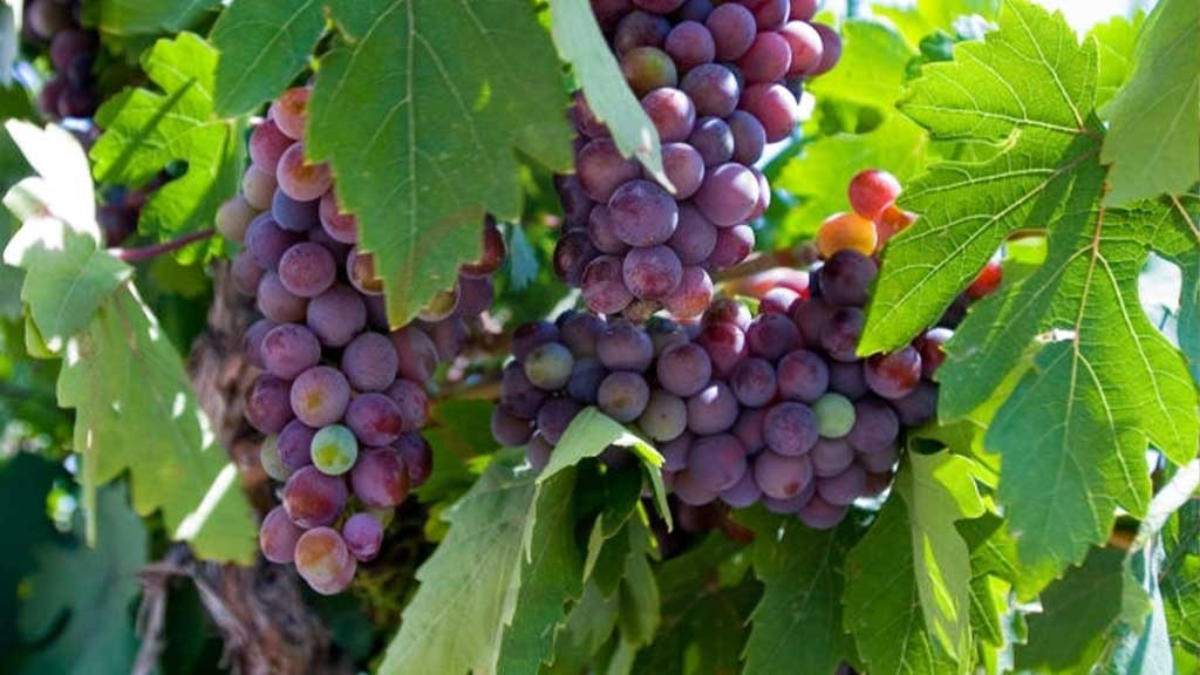Cardinal grapes are a type of red table grape variety. [1]
They are known for their deep red color, round shape, and sweet flavor.
These grapes are commonly enjoyed fresh as a snack or used in various culinary applications, such as salads, desserts, and even for making grape juice or wine.
These grapes, known for their striking appearance, tantalizing sweetness, and succulent juiciness, have become a favorite among grape enthusiasts worldwide.

In this article, we will delve into the world of Cardinal grapes, exploring their origins, distinctive characteristics, nutritional benefits.
So, grab a bunch of Cardinal grapes and join us on this flavorful journey.
Origins of Cardinal Grapes
Cardinal grapes, a hybrid variety, were developed in the 1930s by crossing the Flame Seedless and Ribier grape varieties.
The University of Arkansas played a pivotal role in the creation of these luscious grapes.
Over the years, they have gained immense popularity for their unique blend of attributes that make them stand out from other grape cultivars.
Distinctive Features of Cardinal Grapes
1: Color and Appearance
One of the most striking characteristics of Cardinal grapes is their vibrant ruby-red color, resembling the robes worn by cardinals, which explains their name.
The grapes are medium to large in size and grow in tightly packed clusters.
2: Size and Shape
Cardinal grapes are oval-shaped, similar to their parent, the Flame Seedless grape.
They are slightly elongated and have a smooth, glossy skin that enhances their visual appeal.
3: Taste and Flavor
The flavor profile of Cardinal grapes is what sets them apart from the rest.
They boast a perfect balance between sweetness and a mild, refreshing tartness, making each bite a delightful experience for the taste buds.
4: Seedlessness
Cardinal grapes are seedless, making them incredibly convenient to eat without the hassle of dealing with seeds.
This attribute has significantly contributed to their popularity as a go-to snacking option.
Health Benefits of Cardinal Grapes

1: Rich in Antioxidants
Cardinal grapes are a rich source of antioxidants, including resveratrol and flavonoids. [2]
These powerful compounds help combat oxidative stress and protect the body’s cells from damage.
2: Cardiovascular Health
The high levels of polyphenols in Cardinal grapes promote heart health by reducing inflammation and supporting healthy blood flow. [3]
Regular consumption may contribute to a reduced risk of cardiovascular diseases.
3: Immune System Boost
Packed with essential vitamins and minerals, Cardinal grapes can give your immune system a significant boost. [4]
The vitamin C content, in particular, helps strengthen the body’s natural defenses.
4: Digestive Support
With their dietary fiber content, Cardinal grapes aid in digestion and promote a healthy gut. [5]
Fiber helps regulate bowel movements and may prevent digestive issues.
5: Hydration and Weight Management
Cardinal grapes have high water content, making them an excellent choice for staying hydrated. [6]
Their natural sweetness can satisfy cravings, potentially aiding in weight management efforts.
Incorporating Cardinal Grapes into Your Diet

1: Snacking on Fresh Grapes
One of the simplest and most enjoyable ways to indulge in Cardinal Grapes is by eating them fresh, straight from the vine.
Rinse them thoroughly before consumption to ensure they are clean and safe to eat.
2: Making Delicious Grape Smoothies
Blend Cardinal grapes with other favorite fruits and yogurt for a refreshing and nutritious smoothie.
It’s a great way to start your day or enjoy a mid-afternoon pick-me-up.
3: Adding Grapes to Salads
Give your salads a burst of sweetness by tossing in some halved Cardinal grapes.
Their juicy texture and delightful taste will elevate any salad creation.
4: Grape Desserts and Treats
From grape sorbets to grape tarts, the possibilities are endless when it comes to using Cardinal grapes in desserts.
Explore various recipes to satisfy your sweet tooth.
Cardinal Grapes in Winemaking
1: History of Grape Cultivation for Wine
Grapes have been cultivated for winemaking for thousands of years, and Cardinal grapes have carved their niche in the world of viticulture.
2: Characteristics Ideal for Winemaking
Winemakers value Cardinal grapes for their high sugar content and balanced acidity, making them a suitable choice for crafting flavorful wines.
3: Popular Cardinal Grape Wine Varieties
Several wine varietals are made from Cardinal grapes, ranging from deep reds to blush rosés. Their unique flavor profile adds distinct charm to the wines produced.
Storing Cardinal Grapes Properly
Refrigeration Tips
To keep Cardinal grapes fresh, store them in the refrigerator in a perforated plastic bag.
This will maintain their juiciness and prevent them from becoming too dry.
Washing and Drying Grapes
Before consumption, wash the grapes under cold running water and pat them dry with a paper towel.
This ensures that they are clean and ready to eat.
Freezing for Long-Term Storage
If you have an abundance of Cardinal grapes, consider freezing them for later use.
Place washed and dried grapes on a baking sheet in the freezer until they’re solid, then transfer them to an airtight container or freezer bag.
Cardinal grapes, with their striking appearance, delightful taste, and numerous health benefits, make them a top choice among grape enthusiasts.
Whether you enjoy them fresh, use them in cooking, or savor them in a glass of wine, Cardinal grapes are a sweet and juicy delight for all occasions.
So, the next time you’re looking for a healthy and satisfying snack, reach for a bunch of Cardinal grapes and relish their goodness.
FAQs (Frequently Asked Questions)
Are Cardinal grapes genetically modified?
No, Cardinal grapes are not genetically modified. They are a natural hybrid variety.
How many calories do Cardinal grapes contain?
Cardinal grapes are relatively low in calories, making them a guilt-free snack option. On average, a single cup of Cardinal grapes contains approximately 110-120 calories.
Can I grow Cardinal grapes in my garden?
Yes, you can grow Cardinal grapes in your garden, provided you live in a climate suitable for grape cultivation. These grapes thrive in warm and sunny conditions with well-drained soil. Consult your local nursery or horticulturist for specific advice tailored to your region.
What makes Cardinal grapes different from other grape varieties?
Cardinal grapes have several distinctive features that set them apart. Their vibrant ruby-red color, seedlessness, and delightful balance of sweetness and tartness make them stand out from other grape varieties.
Are Cardinal grapes suitable for making raisins?
While Cardinal grapes are delicious fresh or used in winemaking, they may not be the best choice for making raisins. Seedless grape varieties, such as Thompson Seedless, are more commonly used for raisin production due to their smaller size and higher sugar content.

